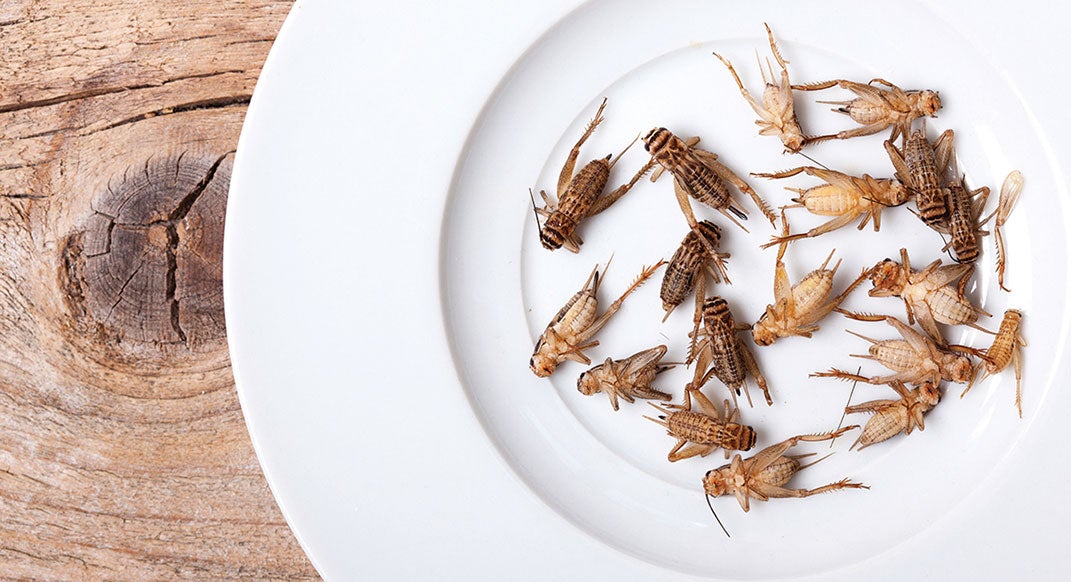The Latest in Energy Bars: Healthy, Sustainable and ... Made of Crickets

Ask a bunch of runners to try an energy bar made from insects and you’ll probably be greeted with the sound of crickets chirping. A growing movement wants to change that.
Cricket protein is the not-so-secret ingredient of a new segment of the energy-bar industry that wants us to see insects as a food source, not a nuisance. And with Paleo and gluten-free diets—as well as eco-conscious consumption—gaining popularity among both trail runners and the general public, they may be onto something.
Crickets pack in twice as much protein per pound as beef and 2.2 times the iron in spinach, according to a 2013 report by the United Nations Food and Agriculture Organization. And they’re not just healthy; they’re also sustainable. One hundred pounds of feed produces 60 pounds of edible cricket protein, compared to just five pounds of edible beef protein. Crickets emit 100 times less greenhouse gas than cattle, use substantially less water and require far less land.
In addition, some runners will find cricket protein more digestible than whey, making it a great fuel option while out on the trail. It doesn’t hurt that cricket bars typically contain a lot of other healthy whole foods, such as dates, nuts and honey.
This all sounds really good until you remember one thing: We’re talking about eating bugs.
The cultural barriers to entry aren’t lost on people like Pat Crowley, founder of the Utah-based cricket-bar company Chapul. Crowley, a former Grand Canyon river guide and water-resource planner, is a passionate advocate for eating insects for environmental reasons. He thinks taking this six-legged creature, grinding it into a flour-like consistency and turning it into the familiar form of an energy bar will help consumers overcome their psychological hang-ups.
“It’s very visually recognizable to our culture as food,” he says. “It’s designed to be a gentle introduction but at the same time a wrecking ball to that cultural bias.”
Crowley isn’t alone. Over the last several years, edible insects have been creeping into the mainstream. New cricket-bar companies are popping up every year, grasshoppers are showing up on the menus at high-end restaurants and Crowley even appeared on the hit television show “Shark Tank.” The conversation around bugs and our willingness to eat them is evolving.
If the cultural barriers to eating insects still seem too high, consider that just a few decades ago many Americans’ stomachs would have turned at the idea of consuming raw fish. Arthropod advocates are hoping that, someday, edible insects with join sushi as an acceptable, and delectable, source of protein.
Bug Bars for Beginners
Ready to see what the buzz is about? Give these bars a try:
Exo. Founded in 2012 by two recent university graduates, Exo Protein is one of the leading companies in the cricket-bar market. The bars come in both sweet and savory flavors, like Apple Cinnamon and Barbecue.
Crickets per bar: 40 / exoprotein.com
Chapul. If the bug-bar revolution has a leader, Chapul is it. The first cricket bars to hit the market, these are healthy, tasty and sustainable.
Crickets per bar: 25 / chapul.com
Jungle Bars. Iceland-based Crowbar Protein’s Jungle Bars are the new kids on the block. These nutritious bars have a nice crunchy texture and pack in loads of nutrition.
Crickets per bar: 75 / junglebar.co
This article originally appeared in our July 2016 issue.